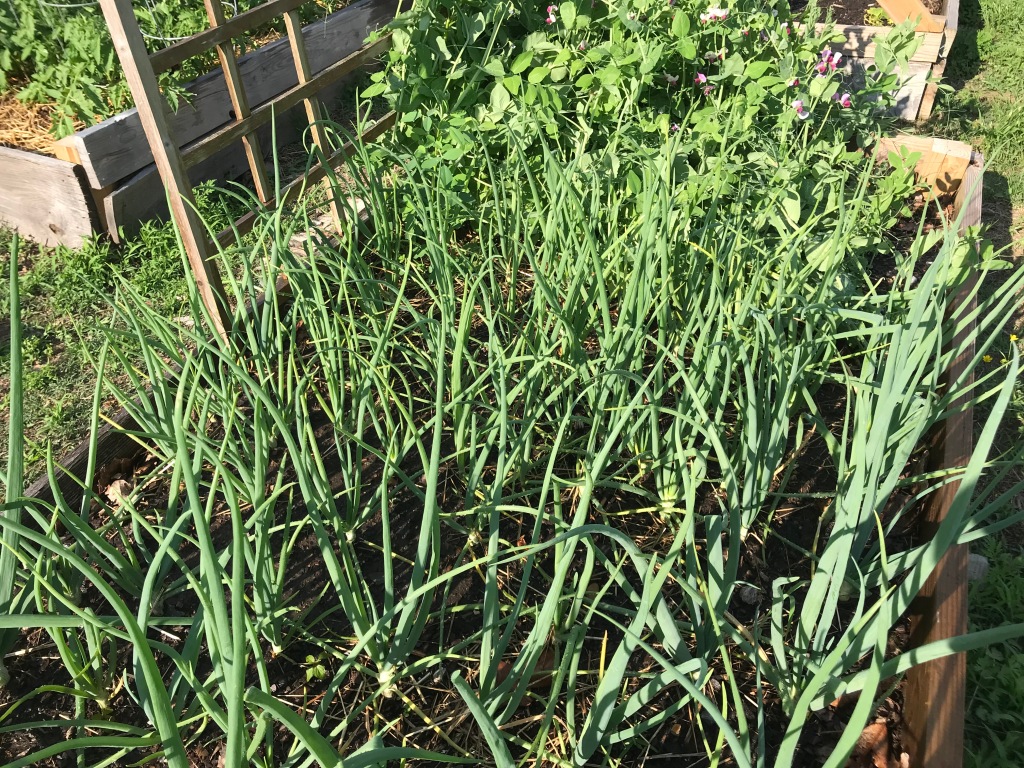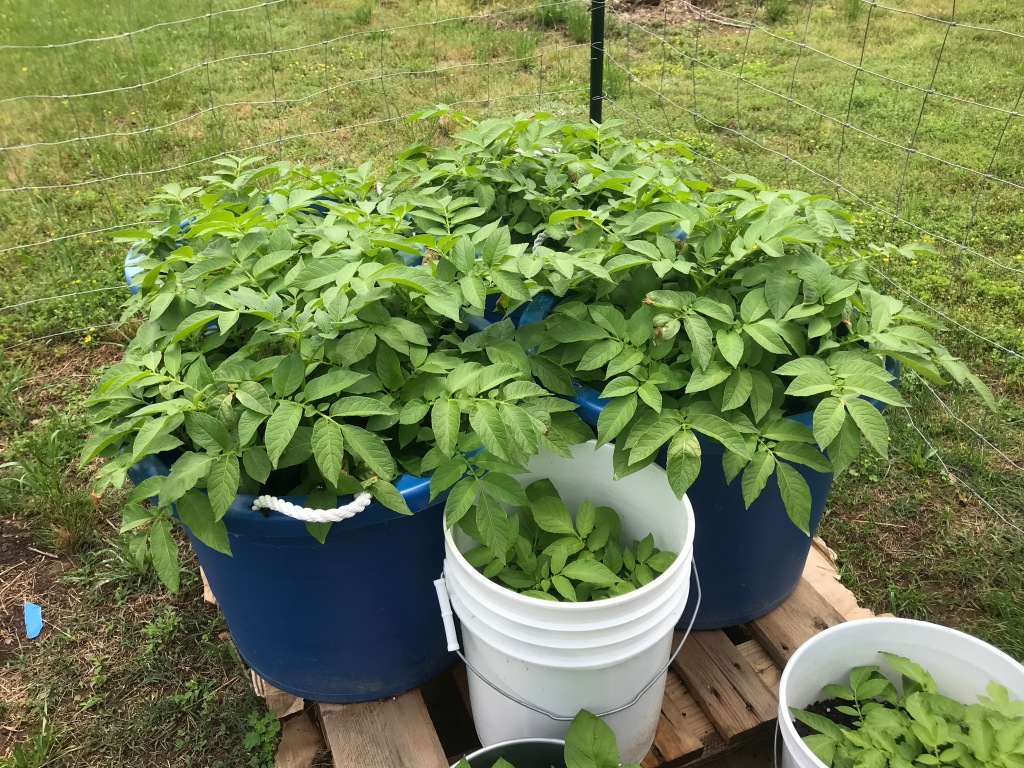Tradition has it that you plant PEAS on St. Patrick’s day for good luck. ONIONS are also a favorite first plant of the season. And don’t forget POTATOES! What’s a good Irish meal without potatoes?
As soon as your soil can be worked, plant your peas, onions and potatoes. If you get a freeze, it might stifle their growth for a minute, but as soon as the spring warmth begins, you’ll see shoots coming up. Freeze will not kill them. Once they sprout, they also don’t mind a little frost, so no worries there. If you do get a hard freeze after they sprout, some leaves may get damaged, but they’ll come right back. Don’t even fret over it.
PEAS
Garden peas are great to plant in March. Plant them a few inches apart about an inch down and water well. Go ahead and put up a trellis or a teepee for their support. Once they are a few inches tall, you can thin them to about 6 inches apart. Water them in dry weather and mulch to keep weeds down. You’ll be harvesting them in about two months.

ONIONS
Onions sets (small onions) are the way to go! Plant them about an inch down at least 3-4 inches apart. Water well. They will grow leaves about two feet high. Once the leaves start to turn yellow at the tips and fall over, you’re ready to harvest. You can use your onions immediately, or you can save them for months. If you save them, you must lay them out on a table in a shaded, dry area to dry for about two months. Don’t wash them, don’t cut the roots or leaves off. Just let them sit. After two months, the stalk will have shriveled up tight so no bacteria can get in, and you can then cut the roots and leaves off and store them in a dry, dark place for months. Wipe the dirt off, but again, don’t wash them. We’ve found the best way to use our multitude of onions is to slice them right after harvest, lay them on a cookie sheet in the freezer to quick freeze so they don’t stick together, then transfer them into a large Ziploc freezer bag. We have fresh onions all year without having to chop individual onions for every meal.

POTATOES
Potatoes need room to grow, so fork your garden bed well, and if your soil it tight and compacted, add some peat moss to loosen it up. They are also heavy feeders, so adding Black Kow or other fertilizer will help a lot! If you plant indeterminate potatoes, they will sprout potatoes from the bottom leaves of the plant, so you need to mound up the soil around them as they grow. You can’t allow sunlight to touch your potatoes or it will turn them green and they’ll be inedible. If you plant determinate potatoes, they will grow potatoes right in the ground where you put them, so no need to mound the soil. If you’re not sure, just mound the soil. It won’t hurt either way. Potato plants will grow about three feet tall and sprout pretty flowers. Once the plant dies back, it’s time to harvest. As with onions, you can eat them right away. If you want to store them, let them dry for a couple weeks in a dark, cool place so the skin hardens, and then store in a dark, cool place (but not next to the onions!). Check them once per week over the winter and eat the ones that are showing signs of deterioration. If they’re getting a little soft or have a blemish, eat those first and get them out of your potato stash. Once one goes bad, it spreads to others rather quickly. If you don’t have dry storage room for them, you can dehydrate slices and store in bags to rehydrate for scalloped potatoes later, you can fry them into chips, or you can make mashed potatoes or potato gnocchi and freeze. If you want to live like the old-timers, leave potatoes in the ground all winter and only harvest what you need for supper. Make sure you get them all by spring or they’ll rot in the moist spring ground.

WEAR GREEN/DRINK BEER
While you’re getting your St. Patrick’s day spring garden started, don’t forget to wear green and finish the task with a nice Irish Ale.
May the leprechauns be near you to spread luck along your way
And may all the Irish angels smile upon you St. Patrick’s Day
I didn’t think peas could be hurt by freeze either, until last year. My first sowing was about 8″ tall when we had a hard freeze. They turned to mush, absolute mush, so I had to snip them off! Live and learn.
LikeLike
Oh noooo! I know that mushy plant thing all too well. Got it with some late bok choy over the winter. One day it was good, then after the night’s deep freeze, it was mush. Yuck! I haven’t seen a spring freeze do that sort of damage. Must have been a really hard freeze to take out your peas!! I have seen leaf damage, but so far, the plants have always grown back. Fingers crossed for no freezes this year!!
LikeLike
Pingback: Freezing Peas | Trace Creek Acres